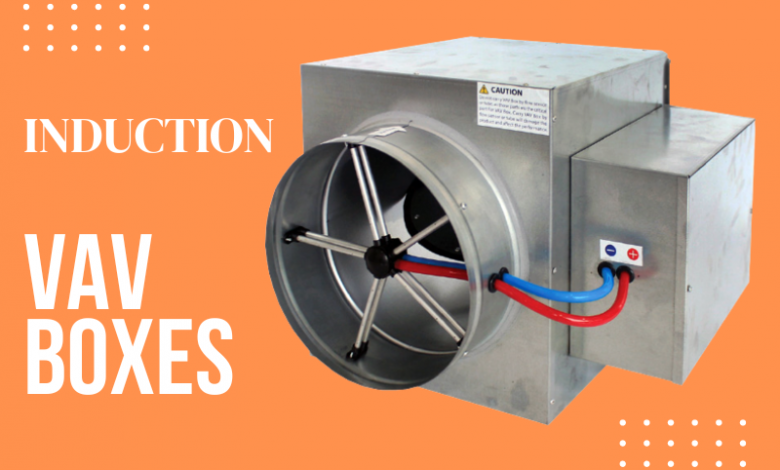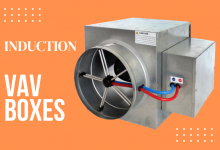
HVAC systems’ major objectives are to keep building occupants comfortable while maintaining air quality and space temperatures that are safe and healthy. By regulating the volume and temperature of circulated air, variable air volume (VAV) boxes make it possible for HVAC systems to operate more efficiently.
What is an Induction VAV Boxes
An air conditioning system includes a variable air volume (VAV) box. It may control the airflow to a particular location, known as a “zone,” and is housed inside the ductwork.
A sort of heating, ventilation, and air-conditioning (HVAC) system is a variable air volume (VAV) system. VAV systems change the airflow at a constant temperature in contrast to constant air volume (CAV) systems, which provide a constant airflow at a changing temperature.
VAV systems have more accurate temperature control, less compressor wear, lower fan energy consumption, less fan noise, and greater passive dehumidification benefits than constant-volume systems.
Multiple-zone VAV systems are a development of VAVs. These are made up of several VAV terminal units or boxes that distribute the air in certain regions of a large indoor environment, like an auditorium.
Parts Of VAV Box
Components that are essential for functioning are included in the conventional VAV boxes. The outside box or shell body is called a casing, made of 22 gauge galvanized steel. The duct leading from the air handling unit is connected to the intake. The outlet serves as a link to the duct that enters the zone.
The damper, or metal door, controls the required airflow quantity and is located within. The thermostat controls a motor that automatically opens and closes the damper, regulating the volume of conditioned air entering the area.
How Does a VAV System Work?
Similar to the regular VAV system, the induction VAV system adjusts the amount of primary cooled air delivered to the room in response to cooling demands. However, the Induction VAV system boosts the system’s capacity for energy conservation and degree of comfort.
For cooling, air from an air handling unit (AHU) is forced into the duct system at a temperature of around 55 degrees Fahrenheit. The system’s air temperature remains constant as it travels through the ductwork to each zone or room in the structure. The air ultimately exits at the end of each line where a VAV box is located.
What Does a VAV Controller Control?
The zone-level flow control device is a VAV terminal unit, sometimes a VAV box. In general, it is an automated actuator for a calibrated air damper. A centralized control system is connected with the VAV terminal device.
With a constant temperature, VAV systems change the airflow. The most basic variable air volume control (VAV) system regulates air from a single supply duct and adjusts the airflow to each zone or room, dependent on the ambient temperature.
The controller closes the damper when the thermostat detects that the room temperature has reached the setpoint until the airflow hits a predetermined lower limit. The controller opens the damper when the room temperature deviates from the setpoint until reaches a predetermined upper limit.
When the temperature in the room exceeds the set point, the VAV controller opens the damper to let cold supply air into space. This brings the temperature back down to the desired level. As the need for cooling in the space alters, the damper’s precise location fluctuates between a minimum and maximum airflow.
VAV systems’ benefits include:
- Individual room control is comparatively more affordable.
- Less operating expenses
- The air handler and ducting system reflect various demands of the building’s cooling and heating.
- In contrast to what is needed for a single zone system, this enables the handler and ductwork to be smaller.
Conclusion
Hope you know sufficient knowledge about the induction VAV boxes, how it works, and controls the airflow in commercial areas. EB Air Control Inc. offers the best quality solutions for HVAC and associated sectors. Get in touch for any queries regarding the VAV HVAC system. Subscribe to Dabble News for more.



